An infinite descent into
pure mathematics
(John Mackey’s forked version)∞∞∞∞
∞
∞
∞
...
by Clive Newstead
Last updated on Monday 26th November 2018
�
2
2
�
Note to readers
Hello, and thank you for taking the time to read this quick introduction to the book!
I would like to begin with an apology and a warning:
This book is still under development!
That is to say, there are some sections that are incomplete (notably Sections 6.2 and
6.3, and all of Chapter 8), as well as other sections which are currently much more
terse than I would like them to be.
As the book is undergoing constant changes, I advise that you do not print the notes
in their entirety—if you must print them at all, then I suggest that you do it a few
pages at a time, as required.
One book, two versions
This is a forked version of Clive’s book, being maintained independently by John
Mackey, who might add, remove or change content at his discretion, and is hosting
it on his own web page.
The original version of this book is available for download from the following web
page:
http://infinitedescent.xyz
John’s version was forked as of 25th May 2018. Please be aware that these two
versions may eventually differ in essential ways!
3
�
4
Navigating the book
The material covered in Chapters 1 and 2 can be considered prerequisite for all sub-
sequent material in the book; any introductory course in pure mathematics should
cover at least these two chapters. The remaining chapters are a preview of other
areas of pure mathematics. The dependencies between the sections in Chapters 3–8;
dashed arrows indicate that a section is a recommended, rather than required, for
another.
3.1
3.2
3.3
8.1
4.1
8.4
6.1
5.1
4.2
7.1
6.2
5.2
4.3
7.2
6.3
5.3
8.2
7.3
8.5
8.3
What the numbers, colours and symbols mean
Much of the material in this book is broken into enumerated items which, broadly
speaking, fall into one of four categories: results (often followed by proofs), defin-
itions, examples (including exercises for the reader), and remarks. These items
are colour-coded as indicated in the previous sentence, and are enumerated accord-
ing to their section—for example, Theorem 1.3.10 is in Section 1.3. Particularly
important theorems, definitions and so on, appear in a box .
You will also encounter the symbols , and , whose meanings are as follows:
End of proof. It is standard in mathematical documents to identify when a
proof has ended by drawing a small square or by writing ‘Q.E.D.’ (The latter
stands for quod erat demonstrandum, which is Latin for what was to be shown.)
End of item. This is not a standard usage, and is included only to help
you to identify when an item has finished and the main content of the book
continues.
Optional content. Sections, exercises, results and proofs marked with this
symbol can be skipped over. Usually this is because the content is very chal-
lenging, or is technical in a way that is mathematically necessary but educa-
tionally not very important.
4
�
5
Licence
This book is licensed under the Creative Commons Attribution-NonCommercial-
ShareAlike 4.0 (cc by-nc-sa 4.0) licence. This means you’re welcome to share this
book, provided that you give credit to the author, and that any copies or derivatives
of this book are released under the same licence, are freely available and are not for
commercial use. The full licence is available at the following link:
http://creativecommons.org/licenses/by-nc-sa/4.0/
Comments and corrections
Any feedback, be it from students, teaching assistants, instructors or any other
readers, would be very much appreciated. Particularly useful are corrections of
typographical errors, suggestions for alternative ways to describe concepts or prove
theorems, and requests for new content (e.g. if you know of a nice example that
illustrates a concept, or if there is a relevant concept you wish were included in the
book). Such feedback can be sent to me by email (cnewstead@cmu.edu).
5
�
6
6
�
Contents
Note to readers
Acknowledgements
1 Mathematical reasoning
1.1 Getting started . . . . . . . . . . . . . . . . . . . . . . . . . . . . . .
1.2 Elementary proof techniques . . . . . . . . . . . . . . . . . . . . . . .
1.3
Induction on the natural numbers . . . . . . . . . . . . . . . . . . . .
2 Logic, sets and functions
3
11
13
14
32
51
79
2.1 Symbolic logic . . . . . . . . . . . . . . . . . . . . . . . . . . . . . . .
80
2.2 Sets and set operations . . . . . . . . . . . . . . . . . . . . . . . . . . 100
2.3 Functions . . . . . . . . . . . . . . . . . . . . . . . . . . . . . . . . . 112
3 Number theory
129
3.1 Division . . . . . . . . . . . . . . . . . . . . . . . . . . . . . . . . . . 130
3.2 Prime numbers . . . . . . . . . . . . . . . . . . . . . . . . . . . . . . 145
3.3 Modular arithmetic . . . . . . . . . . . . . . . . . . . . . . . . . . . . 153
7
�
8
4 Finite and infinite sets
Contents
177
4.1 Functions revisited . . . . . . . . . . . . . . . . . . . . . . . . . . . . 178
4.2 Counting principles . . . . . . . . . . . . . . . . . . . . . . . . . . . . 193
4.3
Infinite sets . . . . . . . . . . . . . . . . . . . . . . . . . . . . . . . . 222
5 Relations
231
5.1 Relations
. . . . . . . . . . . . . . . . . . . . . . . . . . . . . . . . . 232
5.2 Orders and lattices . . . . . . . . . . . . . . . . . . . . . . . . . . . . 244
5.3 Well-foundedness and structural induction . . . . . . . . . . . . . . . 255
6 Real analysis
267
6.1
Inequalities and bounds
. . . . . . . . . . . . . . . . . . . . . . . . . 268
6.2 Sequences and convergence
. . . . . . . . . . . . . . . . . . . . . . . 293
6.3 Series and sums . . . . . . . . . . . . . . . . . . . . . . . . . . . . . . 307
7 Discrete probability theory
309
7.1 Discrete probability spaces . . . . . . . . . . . . . . . . . . . . . . . . 310
7.2 Discrete random variables . . . . . . . . . . . . . . . . . . . . . . . . 329
7.3 Expectation . . . . . . . . . . . . . . . . . . . . . . . . . . . . . . . . 341
8 Additional topics
347
8.1 Ring theory . . . . . . . . . . . . . . . . . . . . . . . . . . . . . . . . 348
8.2 Ordinal and cardinal numbers . . . . . . . . . . . . . . . . . . . . . . 354
8.3 Boolean algebra . . . . . . . . . . . . . . . . . . . . . . . . . . . . . . 355
8.4 Complex numbers
. . . . . . . . . . . . . . . . . . . . . . . . . . . . 356
8.5 Limits and asymptotes . . . . . . . . . . . . . . . . . . . . . . . . . . 357
A Hints for selected exercises
359
8
�
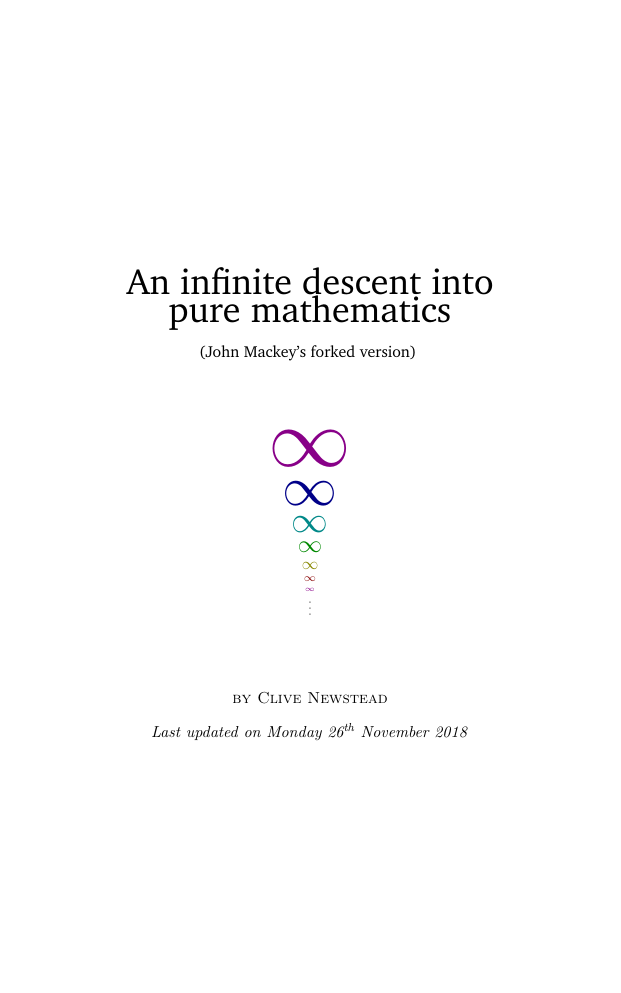
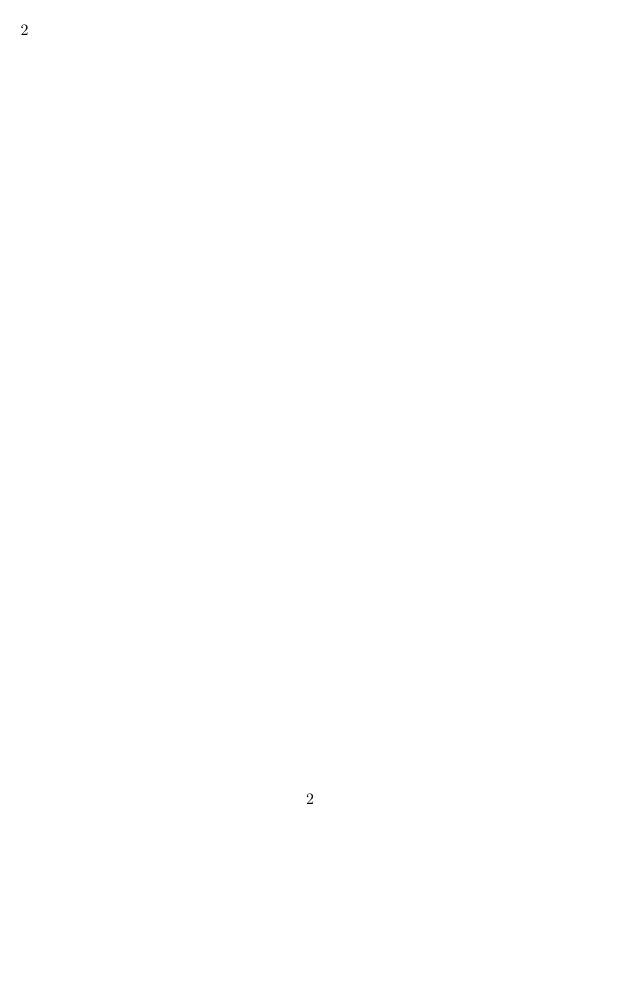
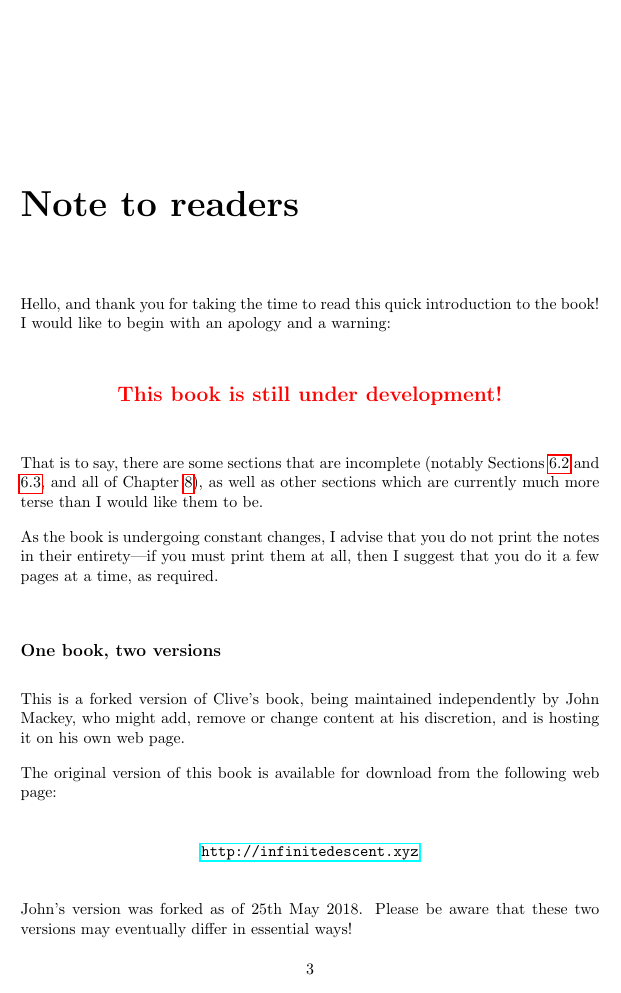
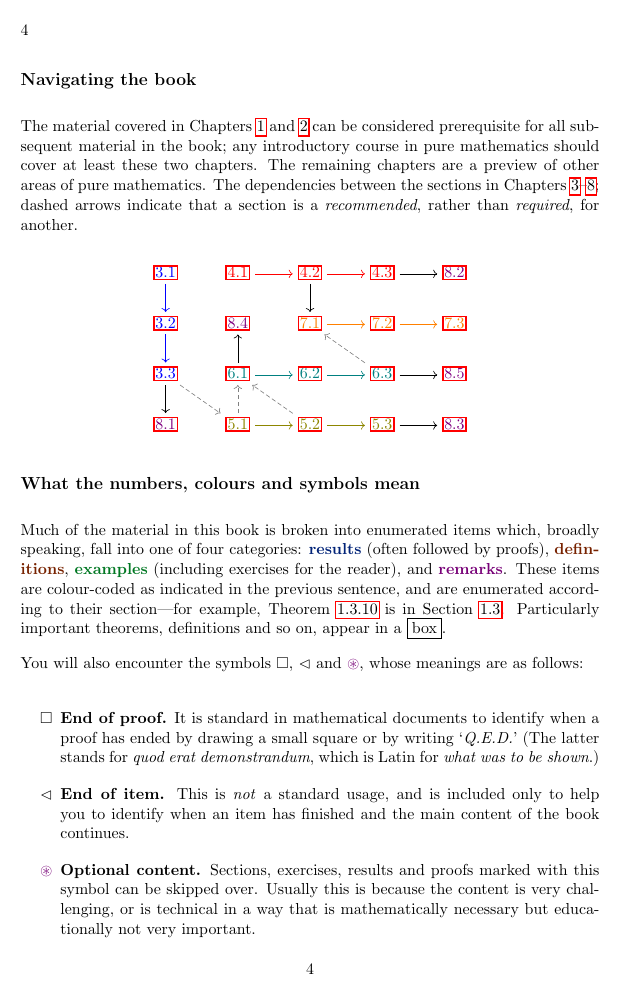
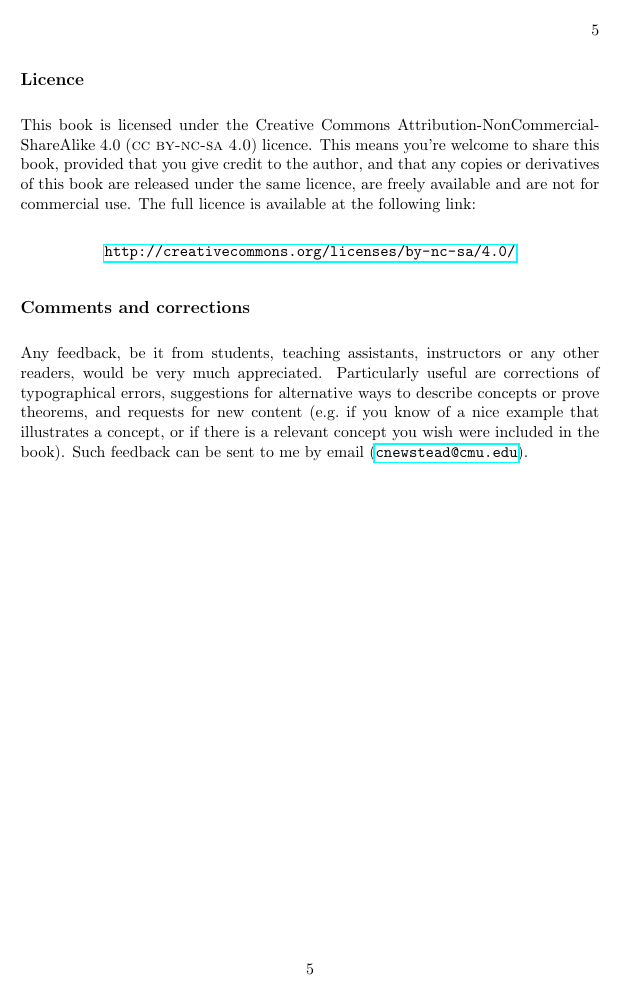
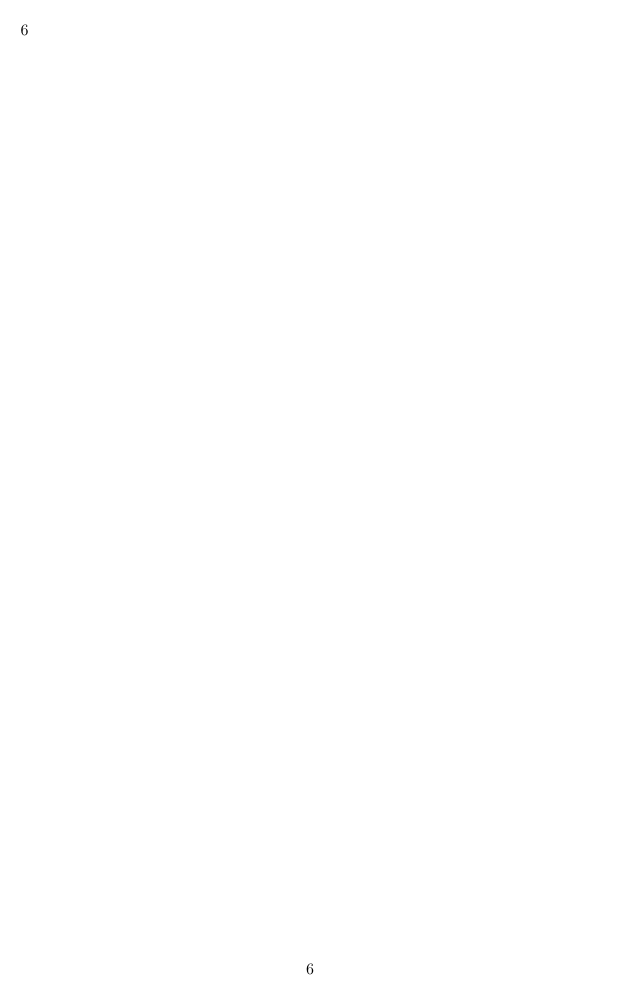
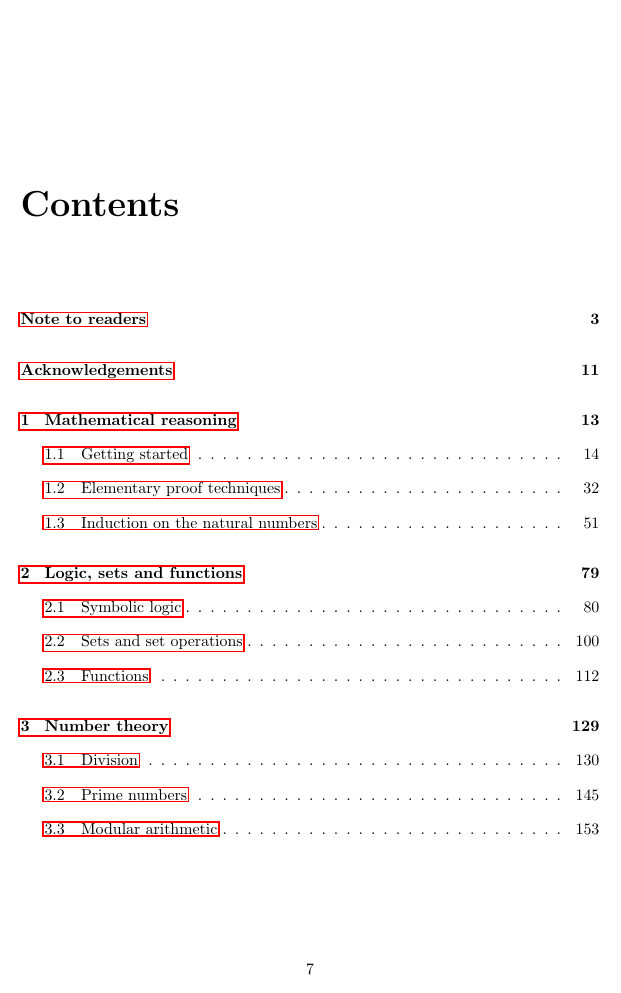
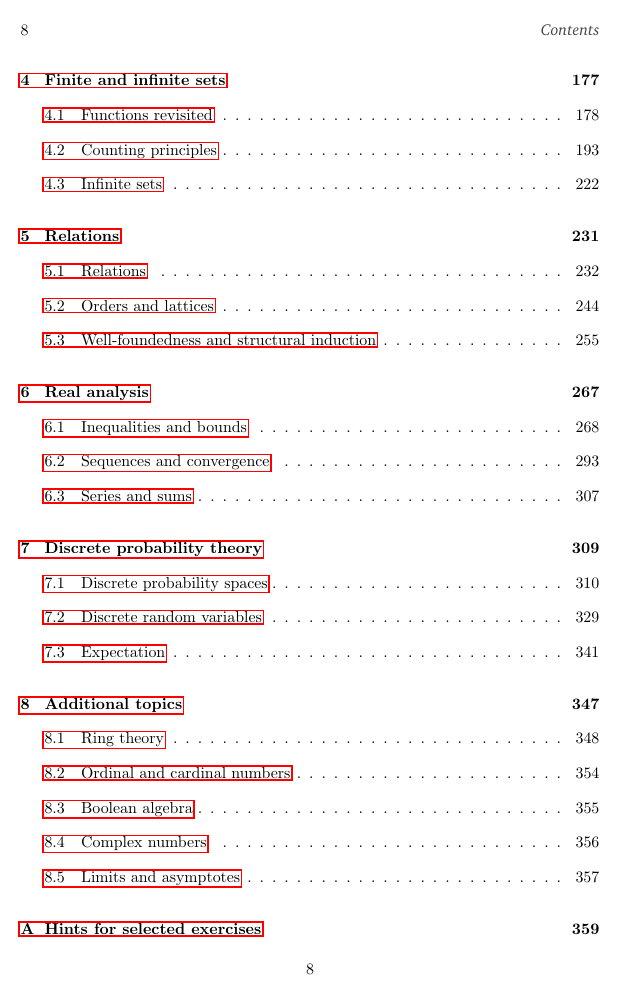








 2023年江西萍乡中考道德与法治真题及答案.doc
2023年江西萍乡中考道德与法治真题及答案.doc 2012年重庆南川中考生物真题及答案.doc
2012年重庆南川中考生物真题及答案.doc 2013年江西师范大学地理学综合及文艺理论基础考研真题.doc
2013年江西师范大学地理学综合及文艺理论基础考研真题.doc 2020年四川甘孜小升初语文真题及答案I卷.doc
2020年四川甘孜小升初语文真题及答案I卷.doc 2020年注册岩土工程师专业基础考试真题及答案.doc
2020年注册岩土工程师专业基础考试真题及答案.doc 2023-2024学年福建省厦门市九年级上学期数学月考试题及答案.doc
2023-2024学年福建省厦门市九年级上学期数学月考试题及答案.doc 2021-2022学年辽宁省沈阳市大东区九年级上学期语文期末试题及答案.doc
2021-2022学年辽宁省沈阳市大东区九年级上学期语文期末试题及答案.doc 2022-2023学年北京东城区初三第一学期物理期末试卷及答案.doc
2022-2023学年北京东城区初三第一学期物理期末试卷及答案.doc 2018上半年江西教师资格初中地理学科知识与教学能力真题及答案.doc
2018上半年江西教师资格初中地理学科知识与教学能力真题及答案.doc 2012年河北国家公务员申论考试真题及答案-省级.doc
2012年河北国家公务员申论考试真题及答案-省级.doc 2020-2021学年江苏省扬州市江都区邵樊片九年级上学期数学第一次质量检测试题及答案.doc
2020-2021学年江苏省扬州市江都区邵樊片九年级上学期数学第一次质量检测试题及答案.doc 2022下半年黑龙江教师资格证中学综合素质真题及答案.doc
2022下半年黑龙江教师资格证中学综合素质真题及答案.doc